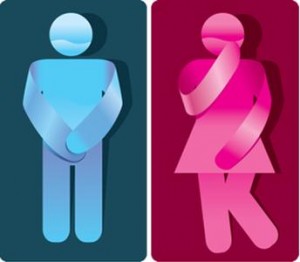
Urinary issues, including incontinence, frequency, and/or urgency, are often connected to the beverages we drink. Fluid and food intake is strongly associated with bladder health, and poor dietary habits may exacerbate the problem. The bladder is a sensitive organ, and it prefers some liquids over others. Flat water is a bladder’s best friend, as opposed to other fluids which are considered bladder irritants. Bladder irritants include (but are not limited to):
- Alcoholic beverages
- Caffeine (tea and soda)
- Coffee (even decaffeinated)
- Carbonated beverages
- Chocolate
- Spicy foods
- Citrus fruits and juices
- Artificial sweeteners
- Sugary foods
- Drinks with artificial colors
Each person is unique. Some women’s bladders are more sensitive to particular irritants and not others.
Women with urinary symptoms are encouraged to drink eight cups of flat water per day and to minimize irritants as much as possible. This recommendation may sound challenging or unrealistic for a number of reasons. First of all, many women who experience urinary urgency, frequency, or incontinence have a hard time understanding why they should drink additional fluids if they are already experiencing difficulty with the smaller amount of fluid they are currently drinking. However, there is a major difference between drinking eight cups of water and even only four cups of coffee or diet soda. Larger quantities of good quality are better for the bladder than smaller quantities of poor quality irritants. Therefore, many women experience symptom improvement when they change their fluids and drink appropriate amounts of bladder friendly water.
Another major complaint that often arises is in regards to coffee. To some coffee addicts, the thought of eliminating their daily kick sounds highly unreasonable and untenable. In an ideal world, this would be the best course of action. However, I offer what I consider a viable plan B to my patients who require their jolt of Joe. If an individual refuses to remove coffee from their morning routine altogether, I kindly request that they drink two cups of water along with every one cup of coffee. This 2:1 water to coffee ratio allows the bladder irritating coffee to be diluted prior to arrival at the bladder. This minimizes the negative effect that it has on the bladder. If a person insists on drinking their irritant, at least it won’t have as strong an impact on the bladder as it otherwise would have. While this recommendation has not been scientifically proven, it has anecdotally proven very beneficial to many clients.
Individuals who experience any of the aforementioned bladder symptoms may significantly benefit from pelvic floor physical therapy. Please contact us at Revitalize Physical Therapy to learn more about how our services can benefit you!



